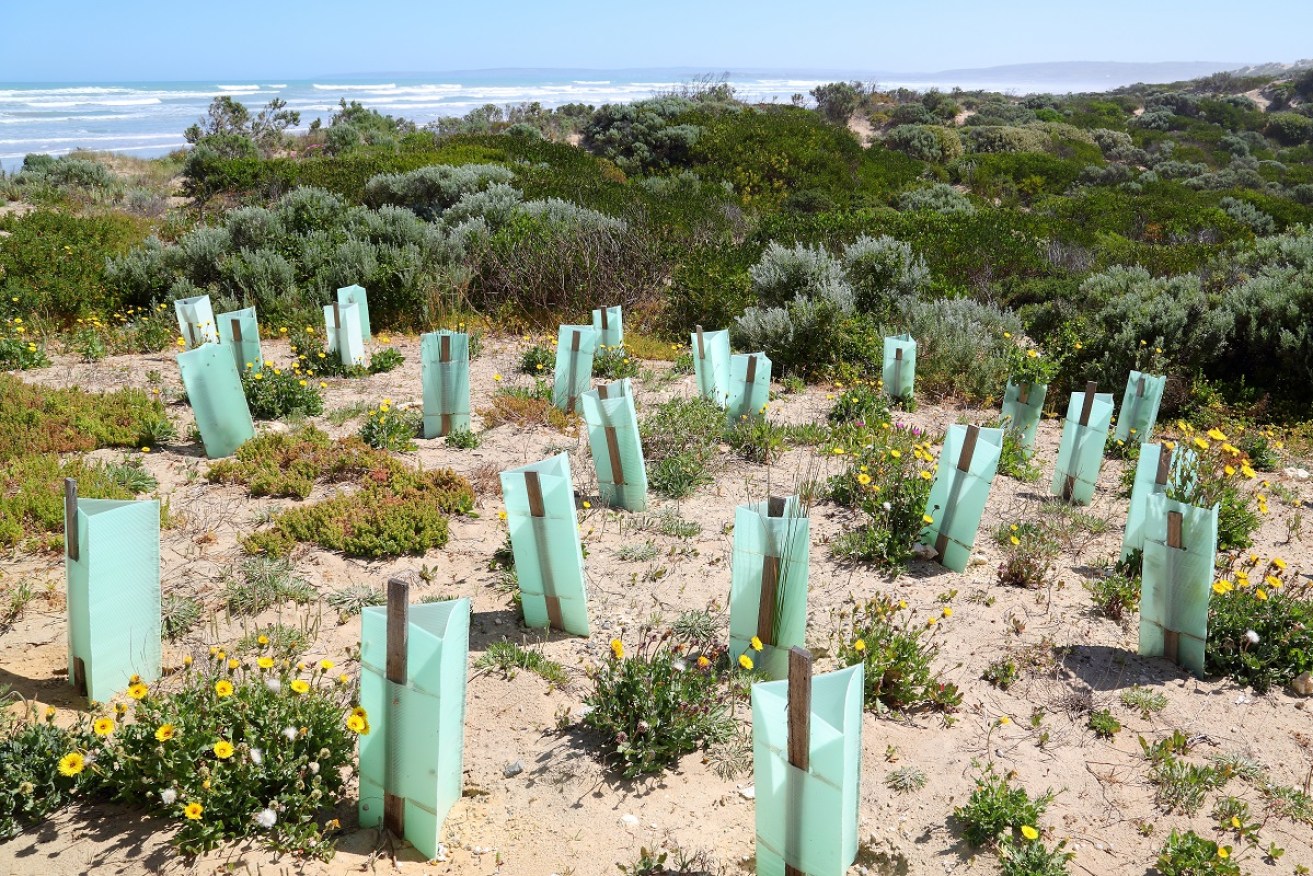
Optimistic SA environmental report card issued
South Australia’s greatest environmental challenges are managing people, their choices and behaviours, rather than scientific measures to ensure greater biodiversity conservation, according to the Matthew Flinders Fellow in Global Ecology Professor Corey Bradshaw.

Sand dune revegetation.
Professor Bradshaw was a key contributor to the the 2018 EPA State of the Environment report (SA), launched last Monday. In it, he offers cautious optimism about better prospects for the future of South Australia’s biodiversity.
“With just a little more effort, coordination, funding, and foresight, South Australia has the opportunity to become a pillar of biodiversity conservation in Australia,” says Professor Bradshaw.
He points to several current effective conservation mechanisms that signal important steps in the right direction. These include increasing our network of protected areas; promoting and implementing large-scale ecological restoration; massive, targeted reductions of feral animal densities; encouraging private landholders to protect their biodiversity assets; releasing environmental water flows to rivers and wetlands, and bringing more people in touch with nature.
However, there is much more environmental protection work to be done. Professor Bradshaw suggests improvement must focus on a series of actions:
- Coordinating existing and promoting more broad-scale ecological restoration projects.
- Establishing strategic and evidence-based control of invasive species, and planning more effectively managed networks of protected areas.
- Fixing broken environmental legislation, such as a weak Native Vegetation Act and government veto powers.
- Expanding conservation covenants on private land.
- Coordinating a state-wide monitoring network and protocol that reports the effectiveness of policies and actions to South Australians.
- Expanding existing conservation investment.
While Professor Bradshaw’s report shines a light on positives, he frames this against serious concerns for the environment.
“The already-poor condition of South Australia’s biodiversity is continuing to decline overall, mainly due to the legacy of vegetation clearing and habitat modification since European colonisation, the destructive influence of invasive species (especially predators like foxes and cats) on our native fauna and flora, and impotent or broken legislation to prevent further damage.”
Professor Bradshaw says there are critical environmental lessons that South Australia must learn. These include assembling better information about which combinations of species are needed for planting to maximise the biodiversity values of habitats, and better planning of eradicating invasive species.
Community-level models of how specific habitats will be affected by climate change are needed to plan effective restoration and conservation projects, and better incentives are needed for private landowners to engage in biodiversity conservation.
Professor Bradshaw’s report is available to view on the EPA’s website; the full State of the Environment report is also available on the EPA’s website.




